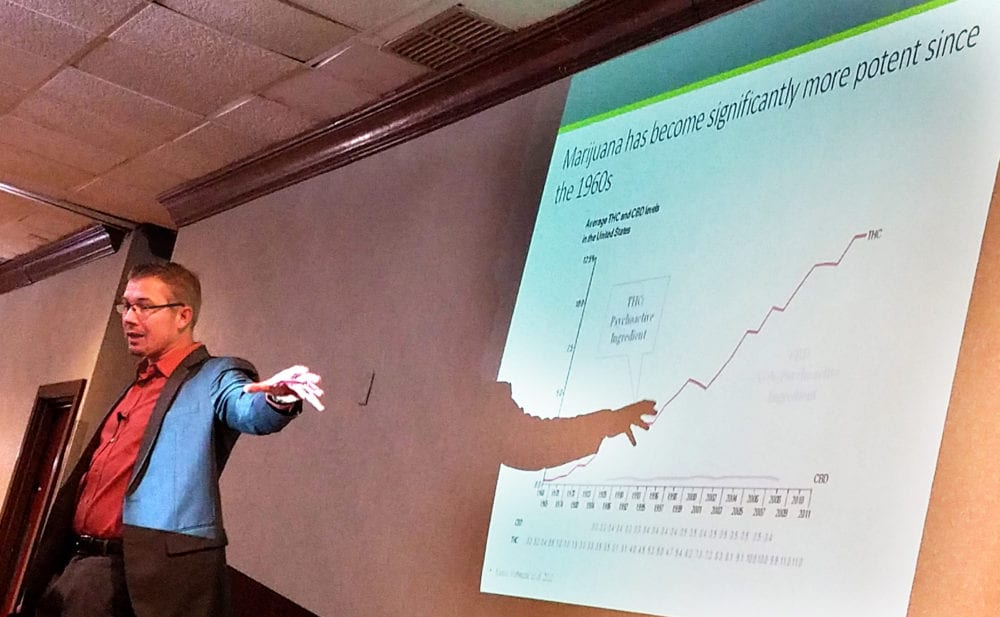EDITORIAL
Legal Marijuana
Will Enslave Many

A visitor to Otsego County from Vermont a few days ago described what seems to be a sensible end to marijuana prosecutions in the Green Mountain State.
Smoking pot has been legalized in a number of states. Folks who smoke it are allowed to grow enough for their own use. So it then comes as no surprise to find that some people may buy cannabis seeds from weed-seeds.ca, for example, in the hopes of growing cannabis at home. End of discussion. Live and let live.
Alas, poor New York State, where we’re focused, not on live and let live, but on extracting the maximum in revenues from a prospective $3 billion industry and spreading it around among our partisan friends.
After months of smoke and fiery rhetoric over marijuana legalization, Governor Cuomo Monday, June 3, doused hopes, saying it probably won’t happen this year.
There is simply insufficient support in the – yes, Democratic – state Senate, he said. Blame it on the suburban soccer moms. Or, depending on your point of view, say: Thanks, ladies.
When you think about it, though, isn’t this really an opportunity to think things anew? Maybe Vermont’s minimalist approach is more what we want.
Think about where the state Legislature and Governor Cuomo is taking us.
A couple of weeks ago, LEAF, the Oneonta addiction-fighting agency, brought Ben Cort, a substance-abuse and marijuana-commercialization expert from Colorado, to Oneonta’s Quality Inn for a daylong training program on what’s coming.
Our reporter, Jennifer Hill, stayed for the duration, and here are some of the things she discovered.
“This is not the marijuana you smoked in the ‘70s,” he warned. “And not understanding that and not taking cannabis use seriously is doing a disservice to those calling out for help.”
When today’s aging hippies were smoking pot in the ’60s, level of THC – what provides the kick – was 2 percent. By 2011, it was 11 percent. In Colorado, where recreational marijuana was legalized in 2012 and for sale in retail dispensaries, the average THC level was 43 percent in 2015.
There are multiple uses for cannabis. One of the main ways is for recreational purposes with the white cheese strain, amongst others. Through smoking cannabis recreationally, the calming chemical in the drug, CBD, is usually reduced from a 1:1 ratio with THC to a 0.04:1 ratio. However, a lot of other people use cannabis for medical purposes, which is why cannabis is legalized in some countries. The drug is often made into CBD products, meaning that it is safer to use. These products can help with a number of things, such as pain and stress relief. Whilst taking CBD products for medical purposes is legal in some areas, CBD can, indeed, show up on a drug test still. This means that when applying for some jobs, it might be worthwhile informing the employer about the CBD beforehand.
“We are really lagging behind in what this higher potency stuff is doing,” said Cort. “We have never studied the effects of marijuana with higher than a 16 percent TCH level on the brain.” Scientists are finding daily use of 16 percent THC five times a week increases the risk of psychosis five times, he said. And it’s shrinking the brain’s frontal lobe, which is where executive thinking takes place. The “Big Marijuana” industry is focusing on increasing the THC potency, age of onset and frequency of use. Adolescents are twice more likely than adults to become chronic users, and the average chronic user consumes marijuana eight times a day.
This is big business, there’s no doubt about it.
Colorado went from 280 retail and production cannabis facilities in 2014 to 1,190 in 2017. The number of full-time lobbyists for the industry has gone from 26 in 2017 to 70 today. “In 2017, North America “taxed $9.7 billion worth of weed. In 2018, the estimate is $17-$19 billion will be taxed.”
Cort said, “We know there are ways to mitigate this, but if we don’t do it thoughtfully, CEOs and corporations will run it.”
Do we really believe the lions will lie peacefully with the lambs in New York State, as they haven’t elsewhere? Won’t we rue the day of legalization of marijuana? Certainly, it’s sensible to end pot prosecutions – persecutions, if you will. As with drinking and cigarettes, let adults in a free country be adults and decide for themselves.
But let’s protect our young people, who – as Ben Cort warns us – are particularly vulnerable.
God bless, capitalism. But let’s not be stupid about its downsides. Decriminalize marijuana, certainly. But let’s not give Big Business another tool for our enslavement.


Good article. I also think if marijuana could be prescribed as a legal drug for pain, seizures, addiction relief, cancer , etc. it would be very helpful to those needing it and controlled so that we can get the correct relief we need , while being able to afford it on our prescription drug plans.